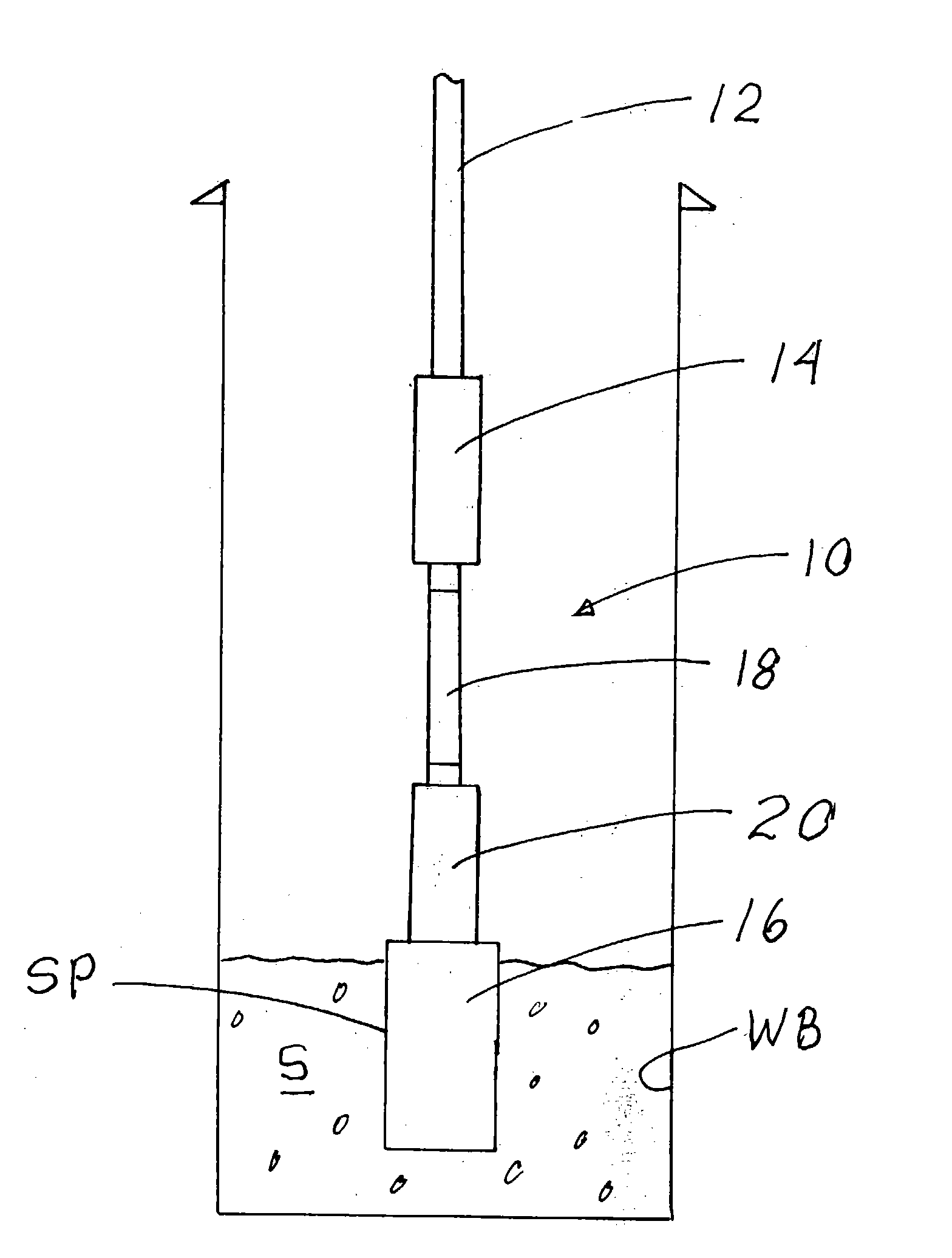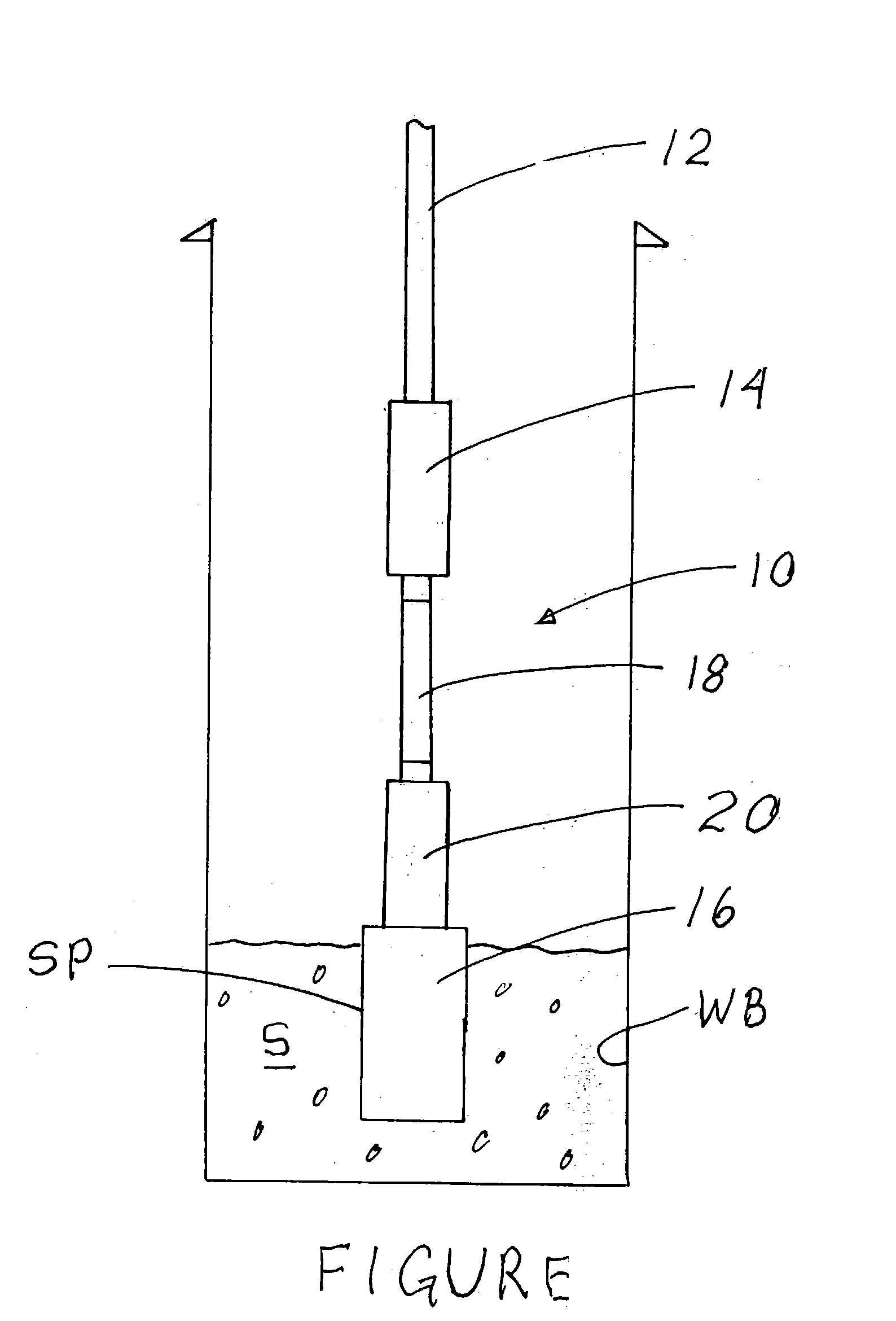Shear strength reduction method and apparatus
- Summary
- Abstract
- Description
- Claims
- Application Information
AI Technical Summary
Benefits of technology
Problems solved by technology
Method used
Image
Examples
Embodiment Construction
[0013] The Figure shows a tubular assembly 10 which has become stuck in sand S at a location downhole in a well bore WB. The assembly 10 includes a tubular such as a work string 12, along with a vibratory apparatus 14,18,20, attached to the stuck object or fish 16. The well bore is illustrated as being a cased hole, but it may be either open hole or cased hole, and the sand in which the fish 16 is stuck may be a sand formation, completion sand, gravel pack, or other similar substance. The location at which the fish 16 is stuck is commonly referred to as the stuck point SP. The vibratory apparatus 14,18,20 which will be used to perform the method of the present invention may have been incorporated into the tubular assembly 10 before its initial tripping into the well bore, or it may be lowered on the work string 12 and attached to the fish 16 after the fish becomes stuck. In either case, the vibratory apparatus should be installed at or very near the stuck point on the fish, and the ...
PUM
 Login to View More
Login to View More Abstract
Description
Claims
Application Information
 Login to View More
Login to View More - R&D Engineer
- R&D Manager
- IP Professional
- Industry Leading Data Capabilities
- Powerful AI technology
- Patent DNA Extraction
Browse by: Latest US Patents, China's latest patents, Technical Efficacy Thesaurus, Application Domain, Technology Topic, Popular Technical Reports.
© 2024 PatSnap. All rights reserved.Legal|Privacy policy|Modern Slavery Act Transparency Statement|Sitemap|About US| Contact US: help@patsnap.com









